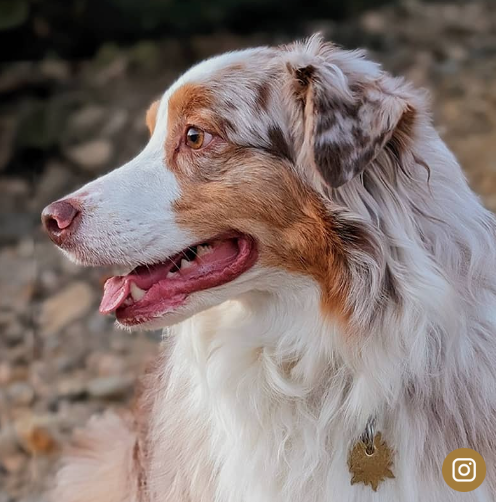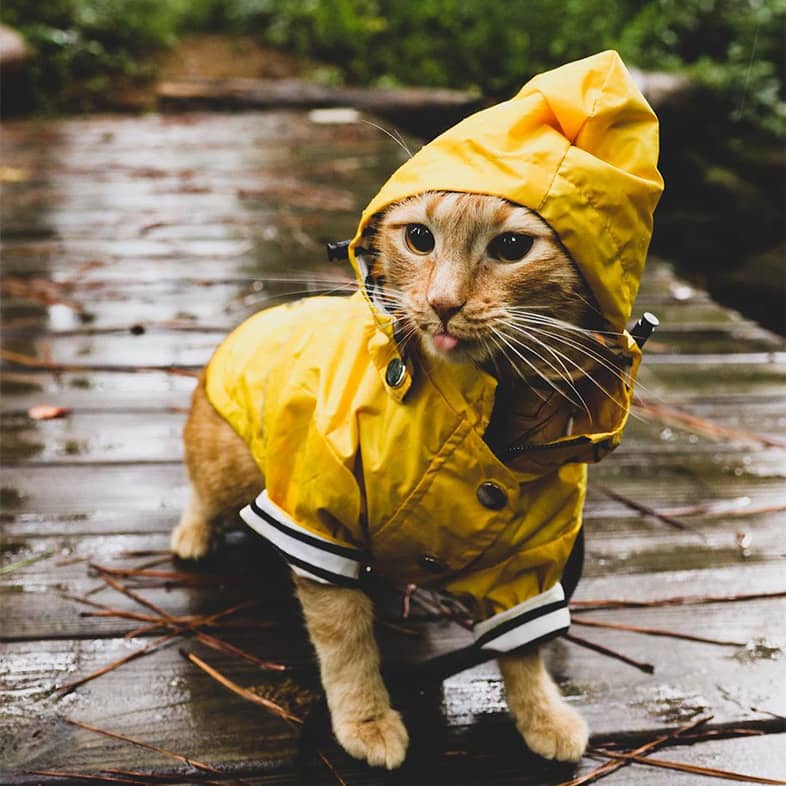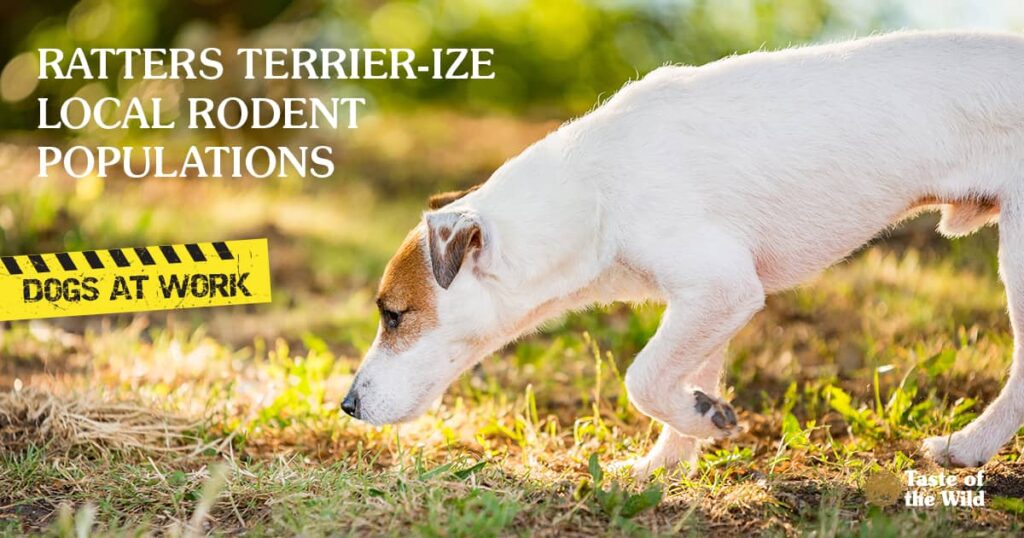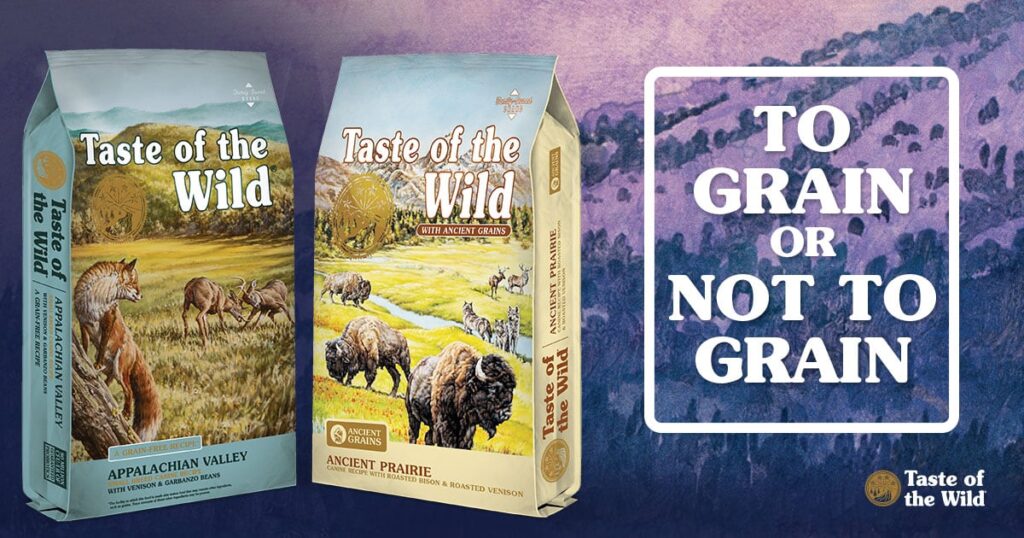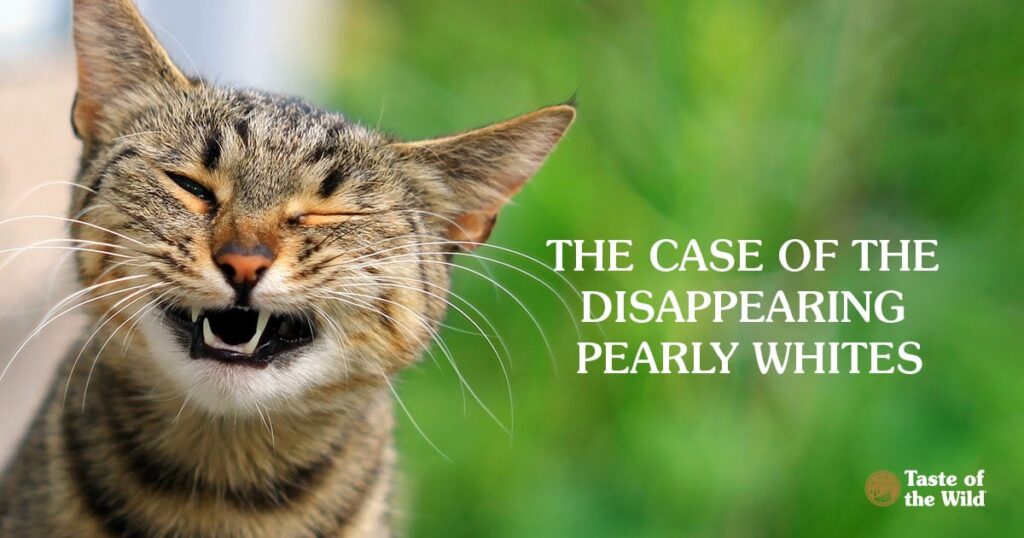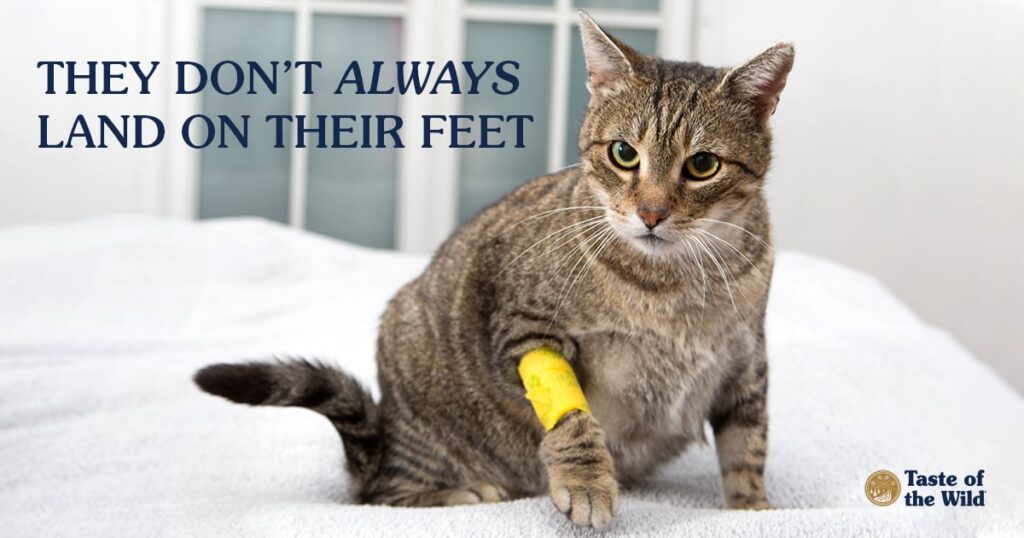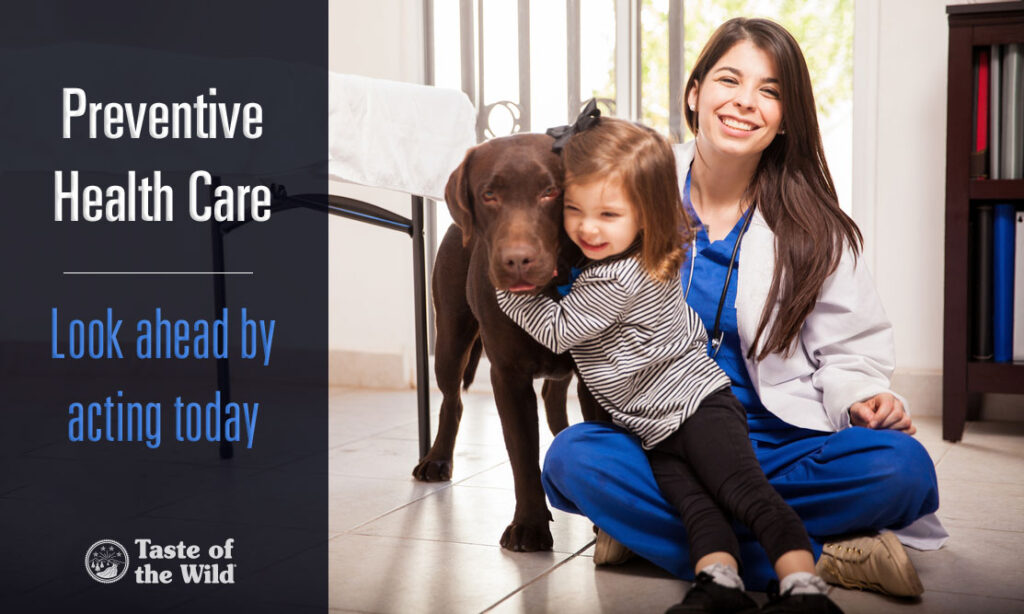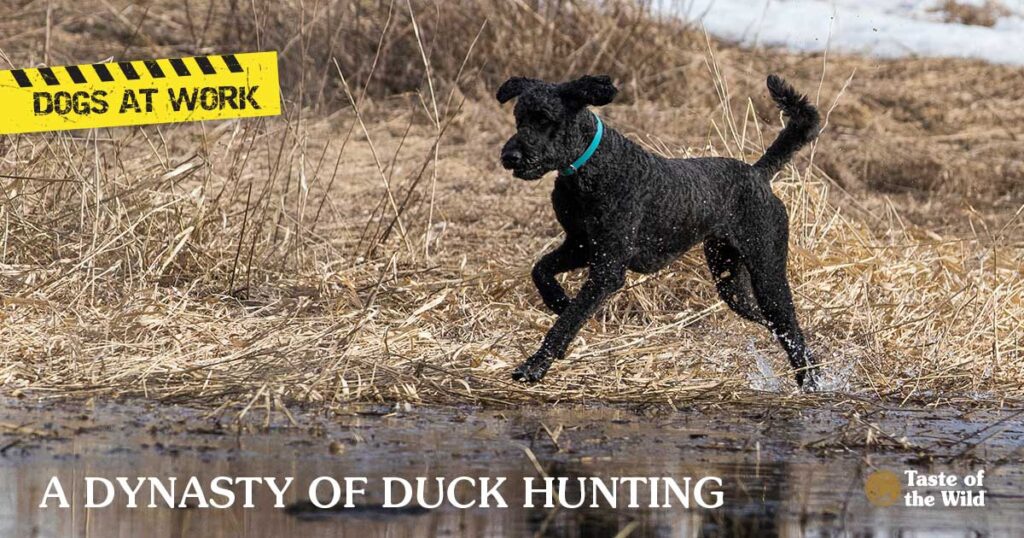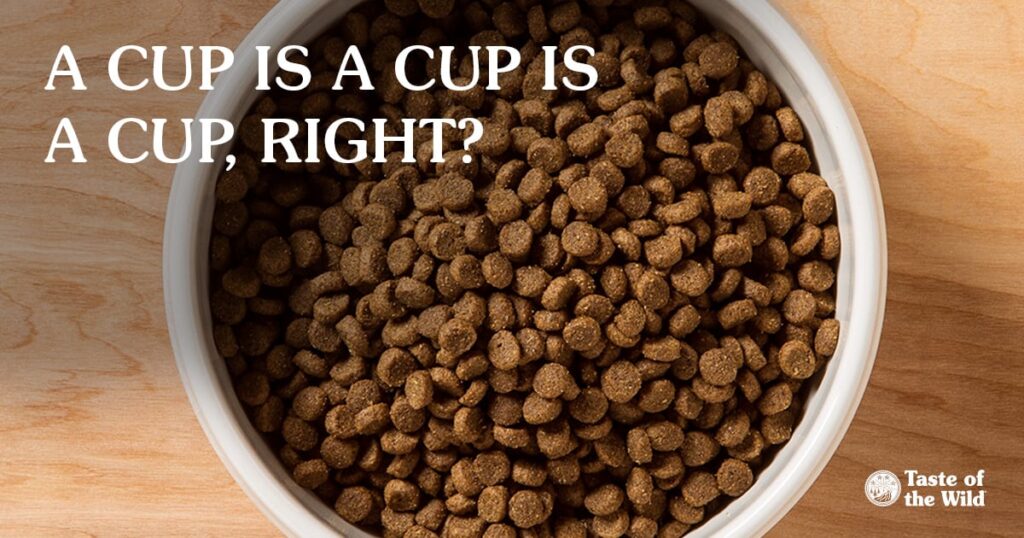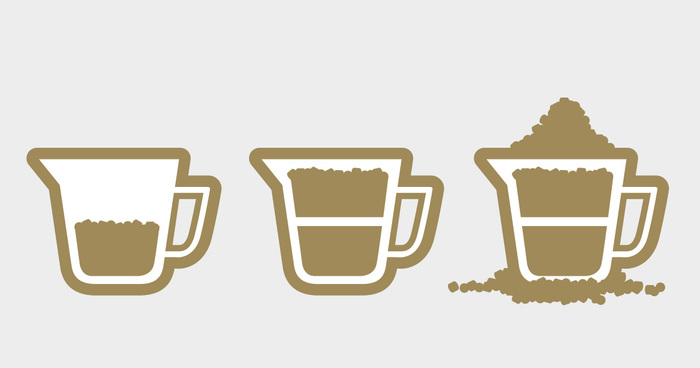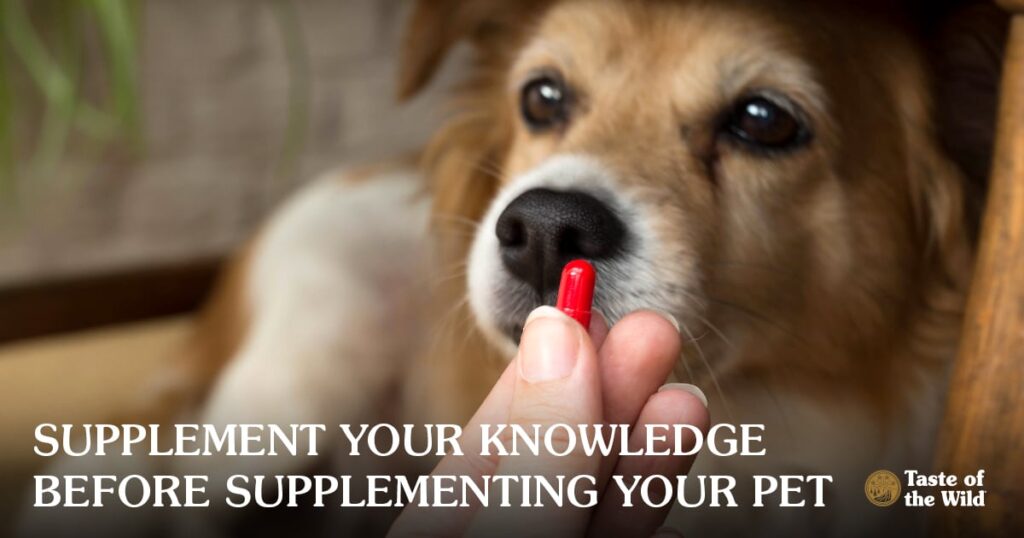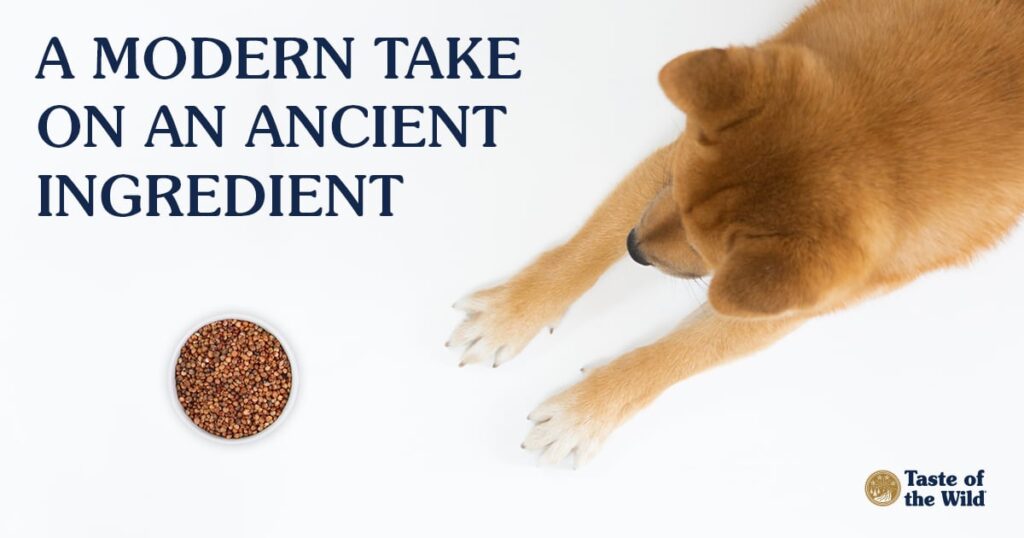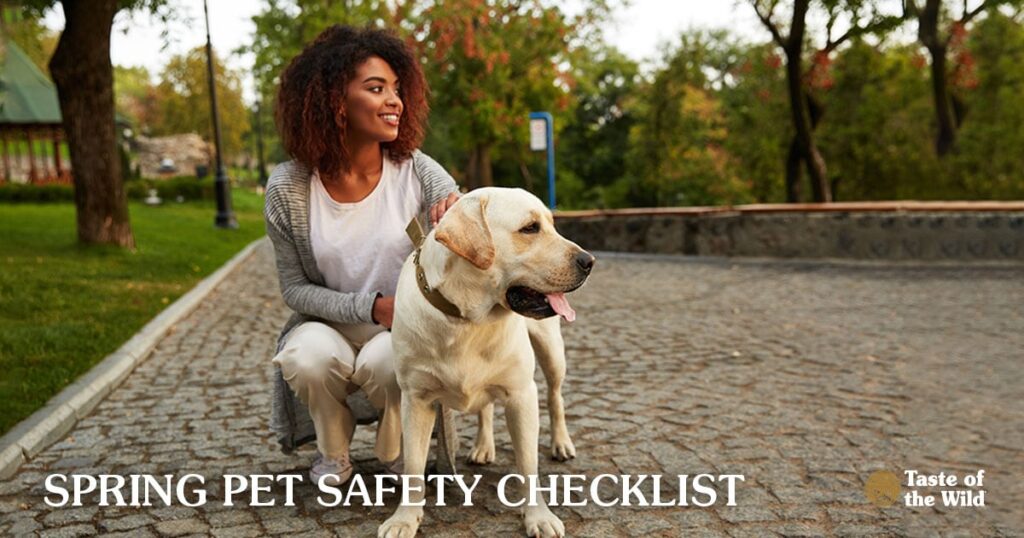
Depending on where you live, the tulips and daffodils may already be pushing up from the earth. You might spot robins feathering nests or a canopy of green buds unfurling overhead, and soon you’ll sleep with the windows cranked open. Ever notice how spring has a way of making the world feel fresh-scrubbed and alive?
No doubt, your pet is as eager to spend time outside as you are. But before you venture out, there are some things you should do to make sure your pet is safe and healthy this season. Here’s a checklist to help you on your way:
- Initiate heartworm prevention — If your pet isn’t already on year-round heartworm prevention, now’s the time to make sure your dog or cat is protected. The parasite is transmitted by mosquitos, and infection is potentially fatal. Mosquitos can sneak indoors, so even indoor-only cats are at risk. (In one study, approximately one-third of the indoor-only cats tested were positive for heartworm infection.) Treatment can be risky and expensive for dogs, and there’s no effective treatment for cats. So prevention is the best approach.
- Banish fleas and ticks — As the temperature rises, these freeloading parasites start actively looking for picnic spots on your pets. Fleas can make pets itch and twitch, and some pets are so allergic to flea saliva that a single bite can cause severe reactions. Once they’re in your house, fleas can be extremely difficult to eliminate. And ticks can cause serious tick-borne diseases. Ask your veterinarian to recommend an effective flea and tick preventive for your pets.
- Double-check your pet’s identification tags — As the weather warms and more time is spent outdoors, there are more opportunities for pets to make a break for freedom. Make sure your pet’s ID tags are legible and contain all your current contact information. If your pet is microchipped, call the microchip company to make sure they have your most current contact information on file.
- Watch for thawing ice — That same lake your dog raced across when the ice was two feet thick is becoming less safe by the minute. Keep pets on a leash and off the lakes, ponds and streams where they could break through thinning ice.
- Retire that winter coat — Many pets start shedding their winter coats about now. Time to bring out your best inner groomer and help your dog or cat unload all that extra fur. If your pet has matted hair, let the professional groomers get the tangles out. A little brushing now can save a lot of time digging hair out of the vacuum cleaner later.
- Freshen up pet beds and bowls — There’s nothing like sleeping in sheets that have just air-dried on the line outdoors. Chances are, your pet can appreciate fresh bedding, too. Now’s the time to wash those pet beds, bowls, toys and sweaters.
- Make sure vaccines are current — Whether your dog is hobnobbing with other pups at the dog park or your cat is sunning itself on the outdoor catio, exposure to other pets can put them at risk for infectious diseases. Play it safe and update any vaccines that may have expired.
- Prepare for allergy season — Does your dog scratch itself raw when the pollen swirls in the air? Check with your veterinarian to make sure you have allergy medications at the ready.
- Clean up the yard — Pick up last autumn’s sticks and acorns that your pet could chew or swallow, and clear away leaf litter where ticks like to hide. Check your gardening supplies to make sure any lawn fertilizers, mulch or pest control products that may be toxic are out of your pet’s reach.
- Bring the calm before (and during) the storms — If your dog becomes unglued when the thunder rolls, talk to your veterinarian about medications that can help ease your dog’s fears. Setting up a “safe room” away from doors and windows where your dog can curl up with his or her favorite toys may also help.
- Ease into exercise — Has your pet been as much of a couch potato as you have over the winter? Then start outdoor exercise slowly and gradually build up the intensity as your pet’s muscles and endurance get stronger.
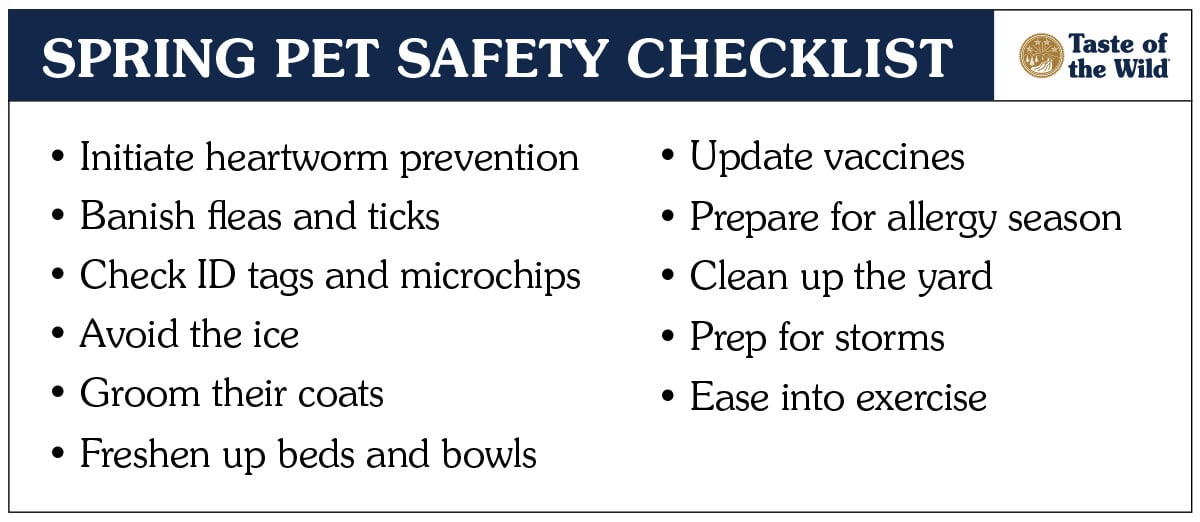
Now that you and your pet are prepared for spring, let the outdoor frisbee tournament begin. The sun is shining, so there’s no time to waste: your best friend is waiting to play outside with you.
